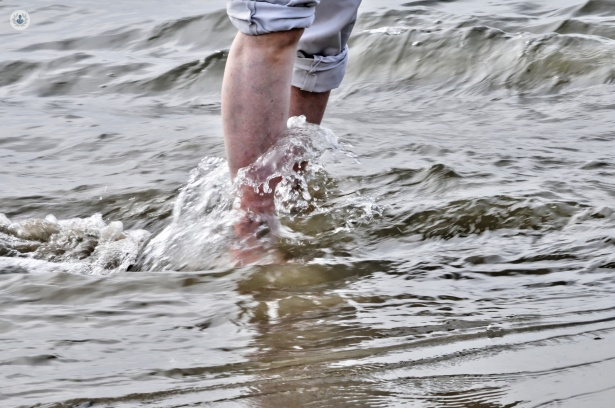Common questions about varicose veins
Written in association with:Varicose veins are a common condition that affects millions of people worldwide, particularly adults. These visible, twisted veins are often a cosmetic concern, but for some, they can cause discomfort and even lead to more serious health issues.
We speak to a leading vascular surgeon who explains what causes varicose veins, what symptoms to look out for, and what treatment options are available.

What are varicose veins?
Varicose veins are enlarged, twisted veins that commonly appear on the legs and feet. These veins become visible when the valves within them fail to function properly, causing blood to flow backwards and pool. Over time, this pooling leads to increased pressure in the veins, resulting in their characteristic bulging appearance. While they are generally not a serious medical issue, they can sometimes cause discomfort or indicate underlying circulation problems.
What causes varicose veins?
Several factors can contribute to the development of varicose veins. A major cause is weakened or damaged valves within the veins. These valves are designed to ensure blood flows in one direction—towards the heart. When they fail, blood accumulates, and the veins become distended. Risk factors include ageing, family history, obesity, prolonged standing or sitting, and pregnancy. Hormonal changes, particularly in women, can also play a role, which is why varicose veins are more common in women than men.
What are the symptoms of varicose veins?
The most noticeable symptom is the visual appearance of the veins themselves. They may look swollen, dark purple or blue, and twisted. Other symptoms include aching or heavy legs, especially after prolonged periods of standing or sitting. You might also experience itching, swelling, or cramping around the affected area. In severe cases, varicose veins can lead to skin changes, such as discolouration or ulcers, which require medical attention.
Who is at risk of developing varicose veins?
Varicose veins can affect anyone, but certain factors increase the likelihood. Ageing is a key factor, as vein walls and valves weaken over time. Genetics also play a role—if a close relative has varicose veins, you are more likely to develop them. Occupations that involve standing for long periods, such as teaching or nursing, can contribute. Pregnancy is another significant risk factor due to hormonal changes and increased pressure on the veins in the pelvis and legs.
Can varicose veins be treated?
Yes, there are several treatment options for varicose veins. Mild cases may be managed with lifestyle changes, such as regular exercise, elevating the legs, and wearing compression stockings to improve blood flow. If these measures are not effective or the veins cause significant discomfort, medical treatments are available. These include sclerotherapy, where a solution is injected into the vein to close it; laser therapy, which uses light to seal the vein; and surgical procedures like vein stripping or endovenous ablation. Your doctor can recommend the best approach based on the severity of your condition.
Should I seek medical advice?
While varicose veins are often harmless, you should consult a doctor if you experience persistent pain, swelling, or skin changes near the affected veins. Early evaluation can rule out more serious conditions, such as deep vein thrombosis (DVT), which requires prompt medical attention.


